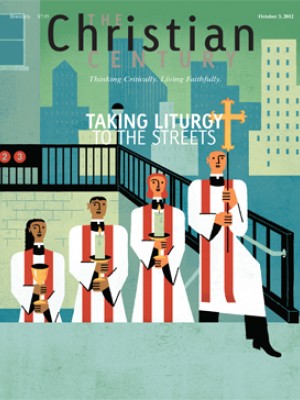Adventists press issue of women’s ordination
Two U.S. regional groups of the Seventh-day Adventist Church have women pastors and are moving faster than the worldwide church on the issue.
The Pacific Union Conference, which includes California and four other western states, voted 79 percent to 21 percent at a special session on August 19 to “approve ordinations to the gospel ministry without regard to gender.”
Weeks earlier, the Maryland-based Columbia Union Conference, which includes eight mid-Atlantic states, adopted a similar change in its policy, with 80 percent in favor.
World leaders of the church—who appealed for unity before the votes were cast—said they were disappointed with the conferences’ actions. Characterizing the Columbia Union’s July 29 action as “not in harmony” with the general policy of the church, they said the Pacific Union would “preempt the collective decisions of the world church regarding ordination.”
Leaders of the denomination, best known for observing the Sabbath on Saturday instead of Sunday, are in the midst of studying the “theology of ordination” for possible consideration at their 2015 General Conference session.
There are about 320 women pastors in the worldwide Adventist Church. Within North America, the denomination has about 120 women pastors and about 4,100 male pastors. Many Seventh-day Adventist women pastors hold a “commissioned” credential, which does not permit ordination, while most male pastors hold a “ministerial” credential, which does.
Read our latest issue or browse back issues.
In 1990, the General Conference, the highest authority of the global church, approved a recommendation that prevented authorization of ordination of women to the gospel ministry. Five years later, it rejected a request from its North American Division that its regional groups be permitted to authorize ordination regardless of gender.
In an official response to the Pacific Union, Seventh-day Adventist Church president Ted N. C. Wilson and other officers cited those previous decisions and said world church leaders “will carefully review the situation and determine how to respond,” possibly at an October meeting.
Adventists are not the first group to face disparate action on women’s ordination. In 1974, 11 women were “irregularly” ordained as priests in the Episcopal Church, two years before the national church voted to allow female priests and bishops.
Andrea Trusty King, pastor of an Adventist congregation in Moreno Valley, California, was elated by the Pacific Union Conference decision. “I see it as a move of God,” said King, 34. “The church is recognizing what he has been doing for a long time.”
But King said not everyone is rejoicing, and she thinks the divide is more generational than geographical. “You have older people who absolutely don’t believe in this and young people who are saying, ‘What is the big deal?’”
Courtney Ray, an associate pastor at a church in Compton, California, called the Pacific Union decision “long overdue.” She chose not to be “commissioned” and now looks forward to being ordained if an executive committee approves her for ordination.
Stephen Bohr, an opponent of women’s ordination who leads an Adventist church in Fresno, California, said the Bible calls for women to have different roles from men. By his reading, women can be prophets—such as church cofounder Ellen White—and deaconesses, but only men can be pastors.
“I just am disappointed that the Pacific Union would launch out on its own and not wait for the world church to make a determination,” said Bohr, 62. “I think they jumped the gun.”
Garrett Caldwell, a world church spokesman, said there is “excitement” in many corners of the Seventh-day Adventist Church about the possibility of full recognition of women’s ministry roles. “There’s an anticipation of that recognition, but I think the greatest concern is that as this body grows and matures and adapts . . . it is able to stay a united body,” he said. —RNS
This article was edited on September 17, 2012.






